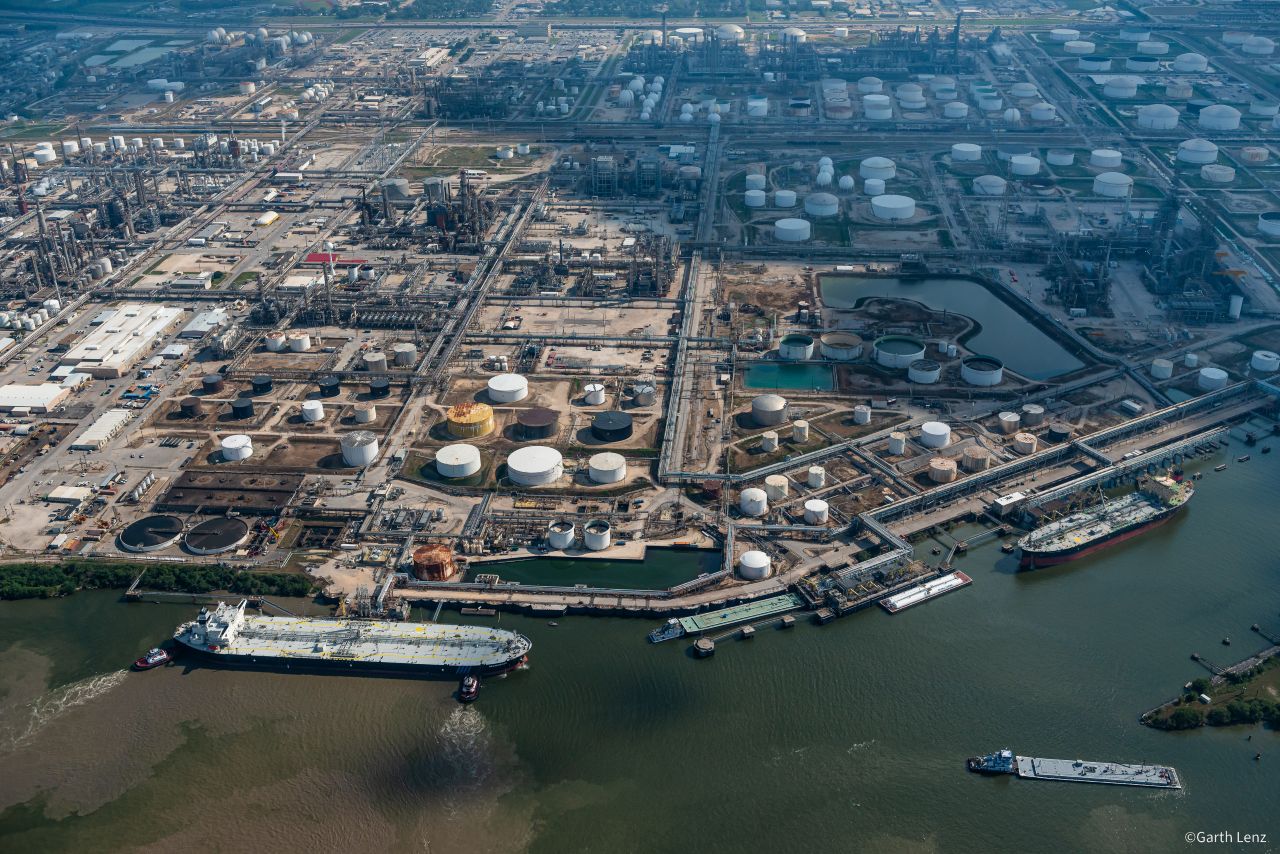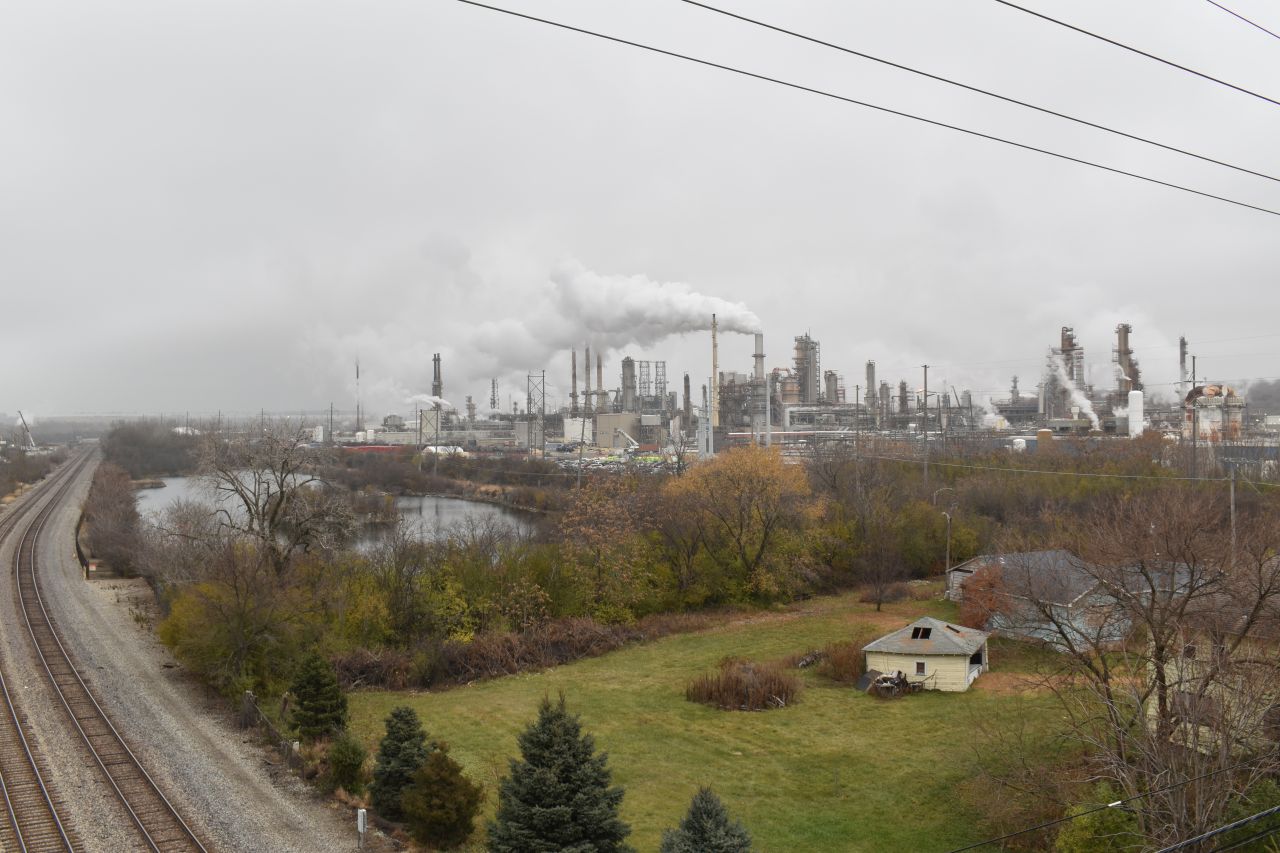Despite incentives for carbon capture, U.S. is still mining CO₂ to produce more oil

On federal land in southwest Colorado, Texas pipeline company Kinder Morgan is pulling up vast volumes of ancient, long-buried carbon dioxide (CO₂). That CO₂ flows into Kinder Morgan’s Cortez pipeline that runs about 500 miles south to Denver City, Texas, where companies use the CO₂ to flood aging oil deposits and coax more oil to the surface. The pipeline can deliver up to 1.5 billion cubic feet of CO₂ per day and supplies approximately 80 percent of the CO₂ used to produce oil in the Permian Basin of West Texas and New Mexico.
This technique, known as enhanced oil recovery, has been around since the 1970s and is used to produce about 4 percent the U.S.’s oil output per year. Aside from being the most significant gas driving global climate change, CO₂ is used for enhanced oil recovery because it helps loosen oil from older deposits, making it easier to pump out.
Even as the Biden Administration is providing billions of dollars in taxpayer subsidies to encourage industry to capture carbon dioxide and bury it underground to help protect the climate, some companies – like Kinder Morgan – are working in the opposite direction.
Much has been written recently about companies that are capturing CO₂ from industrial sites and injecting it into the ground to extract more oil, a process called “enhanced oil recovery.” But less discussed is the fact that there are other firms – like Kinder Mogan – that are doing something even worse for the climate: They are pulling huge volumes of virgin CO₂ out of the ground to use it to extract more oil, which is then burned to contribute more greenhouse gases into the atmosphere.
Christopher McGlade, head of the energy supply unit for the International Energy Agency, wrote in a 2019 commentary that extracting geologic CO₂ for enhanced oil recovery, instead of using carbon dioxide captured from industrial sites, “clearly provides no benefit” to the climate.
In southwest Colorado, at least some of this CO₂ is believed to be leaking into the atmosphere from Kinder Morgan’s equipment.
This is according to photos and video captured by Andrew Klooster and his colleagues at Earthworks. Klooster is a Colorado field campaigner who has been trained in using special cameras to capture images invisible to the naked eye. They worked with a local group, San Juan Citizens Alliance, to detect leakage from a cluster of Kinder Morgan pipes, tanks, and valves in and around the Canyon of the Ancients National Monument in Colorado.
Out of the 23 well sites and two pipeline junction metering stations they surveyed in a single afternoon, they found four CO₂ leaks and CO₂ venting from a structure on a compressor station, Klooster said.
“Even with this limited investigation, I think people are on solid ground in having concerns about CO₂ infrastructure, whether it is for storage or for extraction and transport, being plagued with the same problems with leaks and releases that are common in the traditional oil and gas sector,” Klooster said.
Kinder Morgan did not respond to emailed questions from Oil & Gas Watch News.
For years, U.S. energy officials have been hoping that more of the CO₂ used for enhanced oil recovery would come from gas plants, power stations, and other fossil fuel sources that would otherwise emit into the atmosphere. Lured by taxpayer subsidies boosted by the Biden Administration, energy companies are looking to capture more CO₂ from refineries, gas processing plants, and other highly polluting facilities. In 2022, companies reported that they captured more than 18 million metric tons of CO₂ from these sources, according to the EPA.
However, the industry is still harvesting far less CO₂ through carbon capture than it gets from tapping underground geologic sources, like Kinder Morgan is doing.
In 2023, the company announced a partnership with Red Cedar Gathering Company, a joint venture between the Southern Ute Indian Tribe and Kinder Morgan, to capture CO₂ from natural gas gathering and treatment equipment and transport it for disposal in West Texas via the Cortez pipeline. However, this arrangement involves transporting only 20 million cubic feet of CO₂ per day, less than 3 percent of the 900 million cubic feet per day already flowing through the pipeline.
In 2022, only 39 percent of the country’s CO₂ supply was captured from industrial sources. The remaining 61 percent came from underground sources, including the Jackson Dome in Mississippi; the McElmo Dome, Doe Canyon, and Sheep Mountain in Colorado; and the Bravo Dome in New Mexico. Roughly 70 to 80 percent of the CO₂ used in enhanced oil recovery in the U.S. today comes from belowground, not from industrial sources.
“Pulling sequestered carbon dioxide out of natural formations to goose oil production is pathological,” said David Hawkins, a senior attorney with Natural Resources Defense Council. “Given the climate crisis and carbon capture technology, there’s no reason this should be happening.”

The lack of sufficient captured CO₂, and pipelines needed to get it to its users, has also left other types of industries that use carbon dioxide, such as breweries and laboratories, somewhat dependent on CO₂ extracted from geologic sources.
The biggest example is the Jackson Dome, an ancient volcano 3,000 feet below Jackson, Mississippi. Since production began in the 1970s, most of the CO₂ from the Jackson Dome has been used for oil production, though it is also an important supplier for other industries.
When gas from a nearby mine contaminated the CO₂ supply from the Jackson Dome in 2022, it contributed to a nationwide CO₂ shortage that affected businesses ranging from breweries and soft drink manufacturers to medical laboratories and dry ice makers. These industries accounted for about 20 percent of total U.S. CO₂ use in 2022, according to the EPA.
“If you stopped being able to pull out of, say, the Jackson Dome, that’s a huge disruption,” said Maura Garvey, president of Intelligas Consulting. “I think everybody could adapt, but you need time to adapt.”
The vast majority of geologic CO₂, especially in the western U.S., is used for enhanced oil recovery -- about 92 percent according to the EPA. The remaining 8 percent is used to carbonate beverages and in other food, medical, research, and industrial facilities.
When companies drill a new oil well, the crude oil below is often under pressure and flows to the surface on its own. After years of production, the company might need to install equipment to keep up production – the familiar bobbing machines called pumpjacks that dot the landscape in oil-producing areas.
In later stages of an oilfield’s life, coaxing more crude to the surface often requires loosening that oil and adding pressure to make it more easily pumped out. Oil technicians realized they could do this with CO₂, helping keep production from an old well going years after other methods have exhausted the oil.
Though much of the CO₂ used for enhanced oil recovery stays in the ground or is re-captured and used for more oil production, the technique still produces oil, which releases CO₂ when burned.
“This is not a carbon neutral endeavor, especially when the CO2 being used is already naturally trapped and stored in a formation beneath the earth, such as in this Kinder Morgan example,” Klooster said. “Short and simple, it is absurd.”
Lead photo: Andrew Klooster, Colorado field organizer with Earthworks, points a thermal imaging camera at Kinder Morgan equipment at the company’s carbon dioxide production fields in Southwest Colorado (Photo courtesy of Andrew Klooster, Earthworks).















